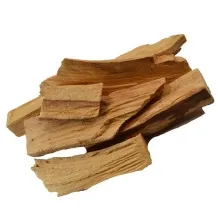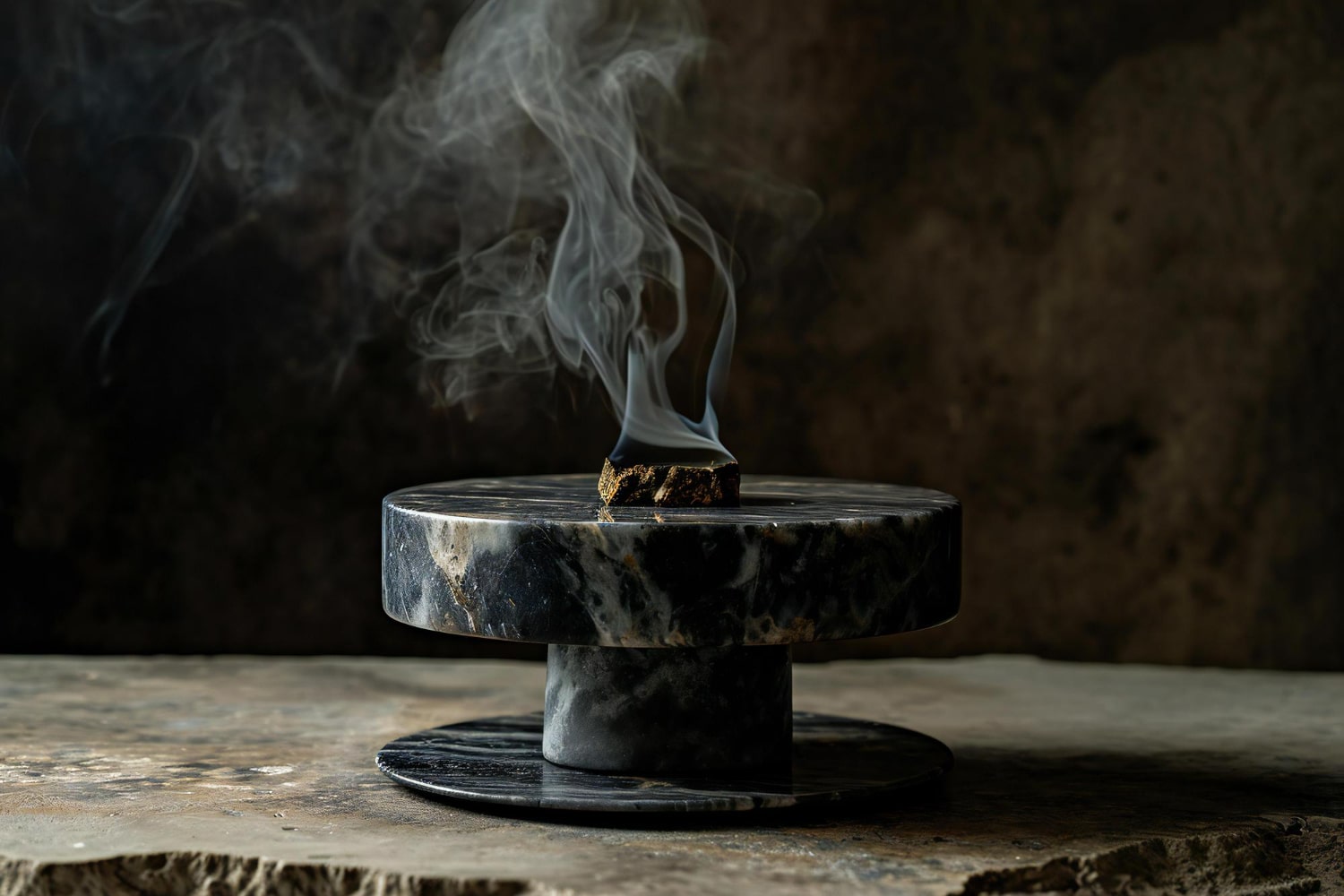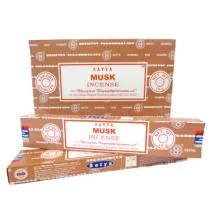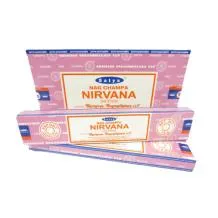 From the ancient temples of Egypt to the serene meditation halls of Japan, incense has woven its aromatic threads through the fabric of human history. Its origins, shrouded in the mists of time, are as diverse as the cultures that cherish it. Incense, in its myriad forms, has served not just as a conduit for spiritual communion but also as a cornerstone in the rituals that define the human experience. And above all else? It smells amazing!
From the ancient temples of Egypt to the serene meditation halls of Japan, incense has woven its aromatic threads through the fabric of human history. Its origins, shrouded in the mists of time, are as diverse as the cultures that cherish it. Incense, in its myriad forms, has served not just as a conduit for spiritual communion but also as a cornerstone in the rituals that define the human experience. And above all else? It smells amazing!
Today on Avalon, we will take you on a scented journey to see what incense is all about - the significance, types, and benefits of it all. We'll check out its rich history, tracing the aromatic trails left by our ancestors, and discover the myriad types that enchant our senses. Beyond the fragrant smoke, we'll investigate the scientific and anecdotal evidence supporting its benefits, shedding light on why this ancient practice continues to be a cherished part of modern life. As we discover the essence of incense, we invite you to explore its various forms—each with its own unique properties and uses. From the resinous drops of frankincense used in ancient rites to the delicately crafted sticks that grace our homes today, incense holds the power to transform our surroundings, elevate our spirits, and deepen our connection to the past. Join us as we explore the art and science of incense, and how it continues to cast its spell on the human spirit, inviting tranquility and reflection into our hectic lives.
The Historical Roots of Incense
The story of incense begins in the cradle of civilization, where its smoke bridged the earthly and the divine. Ancient Egyptians, as early as 5,000 years ago, were among the first to harness the mystique of incense, using it in their elaborate rituals to worship gods and embalm the dead. Incense was not merely a luxury; it was a sacred medium, a means to communicate with the afterlife, ensuring safe passage for the departed souls. Temples were awash in the rich scents of myrrh and frankincense, symbolizing the prayers of the faithful ascending to the heavens.
Far to the east, in the ancient valleys of the Indus Civilization, incense played a pivotal role in daily life and spiritual practices. India's Vedic texts are replete with references to incense as an integral part of religious ceremonies, a tradition that continues to this day. The smoke of sacred herbs and woods, believed to carry the divine essence, purified the environment, aiding in meditation and spiritual pursuits. In China, the use of incense can be traced back to the Neolithic period. It became deeply ingrained in Chinese culture, symbolizing purity and loyalty.
The burning of incense was a key element in Confucian, Taoist, and Buddhist rituals, each stick or coil representing a prayer or offering to ancestors and deities. The famous Silk Road facilitated the exchange of incense materials, such as agarwood and sandalwood, intertwining the destinies of East and West through the shared language of fragrance. These ancient practices highlight incense's unparalleled ability to transcend cultural and temporal boundaries. Its smoke, carrying the aspirations and reverence of countless generations, tells a story of universal human experience—a testament to its enduring legacy.
Types and Properties of Incense
Incense manifests in a plethora of forms, each with its own distinct aroma, purpose, and method of burning. Understanding these variations is not just about appreciating their scents but also about recognizing the cultural and historical contexts that gave birth to them. Here, we explore some of the most popular types of incense, focusing on the materials used and their inherent properties.
Scientific Findings and Anecdotal Benefits
The allure of incense extends beyond its rich history and sensory appeal, touching upon the realms of mental health and cognitive function. Recent scientific studies have begun to unravel the mysteries of incense, offering insights into its potential benefits on the human mind and body. For instance, research suggests that certain incense components, such as frankincense, possess anxiolytic (anxiety-reducing) and antidepressant properties, potentially aiding in stress relief and emotional well-being. Another study highlights the positive effects of sandalwood on sleep quality, attributing these benefits to its soothing aroma that promotes relaxation and reduces wakefulness during the night.
Beyond the laboratory, countless individuals share personal stories of how incense has enriched their lives. From the yoga practitioner who finds deeper serenity in her poses to the writer who uses the subtle scent of lavender to unlock creativity, anecdotes abound. These stories often reflect a common theme: the transformative power of incense to create a sanctuary of peace and clarity amidst the chaos of daily life.
The Art of Incense in Modern Practices
In contemporary wellness circles, the ancient art of burning incense has experienced a resurgence. Its integration into meditation and yoga practices underscores a growing appreciation for holistic approaches to health and well-being. The ritual of lighting incense can serve as a grounding act, marking the transition into a mindful state, where each breath is an invitation to the present moment. In aromatherapy, incense is wielded as a tool for mood enhancement, harnessing the olfactory system's direct link to the brain's emotional centers to foster an environment conducive to relaxation, concentration, or invigoration, depending on the scent chosen.
Selecting and Using Incense
Choosing the right incense and employing it effectively can amplify its benefits, turning routine into ritual. When selecting incense, consider the source and purity of ingredients, opting for natural and responsibly harvested materials to ensure a clean, healthful burn. The method of burning incense also matters; for instance, using a proper holder not only ensures safety but can also enhance the diffusion of fragrance. For those new to incense, beginning with milder scents and shorter burn times can help ease the transition, allowing the senses to adjust. Incorporating incense into daily routines, such as during meditation, study, or at the end of a long day, can create moments of pause and reflection, enriching one’s spiritual and emotional landscape.
Try it our yourself!
This exploration of incense—from its historical roots to modern applications—reveals a fascinating blend of tradition, science, and personal experience. Whether used for spiritual purposes, mental health, or simply to enhance the atmosphere of a space, incense continues to be a versatile and cherished element in the quest for harmony and well-being. As we light a stick, cone, or coil, we participate in a ritual as ancient as civilization itself, tapping into the timeless human desire for connection and peace. Understanding the different types of incense and their specific uses allows us to appreciate the diversity and richness of this ancient practice.
The scientific and anecdotal evidence of its benefits adds a layer of intrigue, encouraging us to explore how incense can enhance our own daily routines and well-being. As we conclude, remember that the use of incense is both a personal and universal experience, bridging past and present. Whether you're drawn to it for meditation, stress relief, or simply to enjoy its fragrance, incense offers a simple yet profound way to enrich your environment and state of mind. Happy incensing, dear Avalonians!












